Occupational Safety Training for Construction Equipment Operation
99,000 ₫
Note: The price above is calculated per person and may fluctuate depending on the number of participants in the course and market conditions. For more accurate pricing support, please refer to the price list or contact our consulting staff directly.
Occupational safety is an important issue when operating construction machinery and must be addressed promptly to ensure the health and safety of workers and enhance the reputation of businesses here. The Occupational Safety Training course is one of the effective solutions to raise awareness of how to prevent workplace accidents for workers operating construction machinery.
Table of Contents
Toggle1. Overview of Construction Machinery
In the construction industry, various types of machinery and equipment are used to improve productivity and enhance work efficiency. Below are some common types of machines used in construction:
- Excavator: Used for digging soil, rocks, and other materials during infrastructure construction, foundation digging, and many other applications.
- Bulldozer: Used for leveling soil, moving earth and rocks, and commonly employed in road, dam, and infrastructure construction projects.
- Crane: Various types such as tower cranes and mobile cranes are used for lifting and moving heavy materials in building and infrastructure projects.
- Concrete Mixer: Used to mix and transport concrete from the production plant to the construction site.
- Loader: Used for moving and lifting materials such as soil, sand, gravel, and other building materials.
- Road Roller: Used to compact and flatten road surfaces to create a smooth and firm base layer.
- Drilling Machine: Used to drill holes in soil or rock for foundation piles, infrastructure installations, or water well drilling.
- Explosive Machines: Used in special projects to blast rock or soil during dam construction, mining, and similar works.
- Concrete Cutter: Used to cut or remove layers of concrete, often applied in pipeline work and infrastructure projects.
- Stone Crusher: Used to crush stones into smaller particles, often for sand production and other construction applications.
These are just a few examples, not a complete list. The construction industry uses many different machines and equipment depending on the type of work and specific projects.

2. Overview of Safety Training for Operating Construction Machinery
a. What is Occupational Safety Training?
- Occupational safety training for operating construction machinery consists of lessons aimed at raising awareness about accident prevention for workers. Those who work directly with construction machinery fall under Group 3.
- The safety training course helps workers identify and avoid hazards, reducing the risk of workplace accidents.
REGISTER FOR OCCUPATIONAL SAFETY TRAINING
b. Training Duration
Initial Safety Training Duration
- The total training duration is at least 24 hours, including assessment time.
- 8 hours of theory on safety and occupational hygiene policies and regulations
- 8 hours of theory on basic safety and occupational hygiene knowledge
- 4 hours of theory on specialized training content
- 2 hours of practical training on specialized content
- 2 hours for the final theoretical assessment
The training center will arrange the schedule into multiple sessions depending on the company’s availability. Typically, there are 6 sessions over 3 consecutive days if the company can arrange continuous training.
Periodic Safety Training Duration
- Before the safety card expires, workers who want to renew it must complete periodic occupational safety training. The periodic training duration must be at least 50% of the initial training duration.
Explanation: The total periodic occupational safety training duration is at least 12 hours, including assessment. Upon completion and passing the assessment, workers will have their safety card renewed.
c. Training Content
| No. | TRAINING CONTENT | TRAINING DURATION (HOURS) | |||
| Total | Including | ||||
| Theory | Practice | Assessment | |||
| I | Safety and occupational hygiene policies and regulations | 8 | 8 | 0 | 0 |
| 1 | Overview of safety and occupational hygiene legal documents. | 6 | 6 | ||
| 2 | System of safety and occupational hygiene technical standards and regulations. | 1 | 1 | ||
| 3 | Specific regulations of state management agencies on safety and occupational hygiene during new construction, expansion, or renovation of facilities that produce, use, store, or maintain machines, equipment, materials, and substances requiring strict safety and hygiene. | 1 | 1 | ||
| II | Basic knowledge of safety and occupational hygiene | 8 | 8 | 0 | 0 |
| 1 | Basic knowledge of hazardous and harmful factors in the workplace. | 4 | 4 | ||
| 2 | Methods for improving working conditions. | 1 | 1 | ||
| 3 | Safety culture in production and business. | 1 | 1 | ||
| 4 | Rights and obligations of employers and employees; policies and regimes on safety and occupational hygiene; functions and duties of the safety network. | 1 | 1 | ||
| 5 | Safety and occupational hygiene rules, signs, instructions, use of safety equipment and personal protective equipment; first aid skills and prevention of occupational diseases. | 1 | 1 | ||
| III | Specialized training content | 6 | 4 | 2 | 0 |
| Comprehensive knowledge of machinery, equipment, and substances generating hazardous or harmful factors; risk assessment and management in safety and occupational hygiene; safe working procedures with machinery, equipment, and hazardous substances. | 6 | 4 | 2 | ||
| IV | Final safety training assessment | 2 | 2 | 0 | 0 |
| Total | 24 | 22 | 2 | ||
See more about the training content for 6 groups
d. Safety Card
After completing the occupational safety training course and passing the assessment, workers will be issued a safety card (commonly referred to as a Group 3 Safety Certificate).
The Group 3 safety card contains details such as: full name, date of birth, specific job and working environment, training duration, official stamp, and signature confirming course completion.
According to Article 24, Clause 2 of Decree 44/2016/NĐ-CP, there are two cases:
- If the employer and employee have a labor contract, the employer must sign, stamp, and seal the safety card for Group 3 workers after completing training and passing the assessment.
- If the worker is a freelancer or temporary worker without a labor contract, the training provider must sign, stamp, and seal the safety card after the worker completes training and passes the assessment.

3. Hazards When Operating Construction Machinery
Operating machinery in the construction industry can pose many hazards, and following safety rules is crucial to prevent accidents and injuries. Below are some common hazards when operating construction machinery:
- Occupational accidents: This is the main hazard, including accidents such as falls, crush injuries, or other injuries during machine operation. These can occur due to operator negligence or unsafe working conditions.
- Electrical hazards: Many construction machines run on electricity or fuel, posing risks of short circuits or fire. Operators must follow electrical safety rules and handle fuel carefully.
- Hydraulic systems: Machinery using hydraulic systems may leak hydraulic oil, causing fire or environmental hazards. Regular inspection and maintenance of hydraulic systems are necessary.
- Personal safety rules: Operators must follow personal safety rules, including wearing helmets, safety goggles, reflective vests, and safety boots.
- Operator competence: Operators must be properly trained and experienced to ensure their safety and the safety of others around them.
- Work environment: Environmental factors such as weather conditions, slopes, humidity, and other workplace conditions can also create risks for operators and machinery.
- Collision risks: Machinery may collide with objects or other workers during operation. Operators must maintain control and be aware of their surroundings.
- Technical malfunctions: Machinery may experience technical issues, such as fire, explosions, or sudden breakdowns, creating hazards for operators and nearby personnel.
To minimize risks and ensure safety in construction, regular machine maintenance, operator safety training, and strict adherence to safety regulations for each type of machine and task are essential.

4. Measures to Control Occupational Accidents When Operating Construction Machinery
To control occupational accidents while operating construction machinery, several important measures should be followed:
- Training and retraining: Ensure all machine operators are fully trained in operation and maintenance. Periodic retraining is important to update knowledge and skills.
- Regular inspections: Conduct periodic inspections to ensure machinery operates correctly and safely, including hydraulic, electrical, pneumatic, and mechanical components.
- Regular maintenance: Perform scheduled maintenance to keep machines in optimal condition. Any malfunction must be repaired immediately.
- Compliance with safety rules: Always follow safety rules during machine operation, including wearing helmets, goggles, reflective vests, and safety boots.
- Work environment monitoring: Ensure the work environment is safe for machine operation, checking weather, slope, humidity, and lighting conditions.
- On-site supervision: Operators must maintain awareness of their surroundings and other personnel, monitoring objects, co-workers, and environmental conditions.
- Use warning systems: Utilize alarms or signal lights to alert about machinery presence and potential hazards in the area.
- Legal compliance: Ensure all machinery operation complies with labor safety and environmental regulations.
- Promote a safety culture: Build a safety culture within the construction company by encouraging all employees to maintain workplace safety.
- Incident reporting: Operators must immediately report any accidents, incidents, or safety issues to allow timely corrective actions and prevent recurrence.
- Periodic inspection of construction machinery to detect safety issues such as damage, wear, or mechanical failure, thereby reducing the risk of occupational accidents.

5. Benefits of Occupational Safety Training
An Toàn Nam Việt provides your company with the following benefits after completing occupational safety training courses in accordance with Decree 44/2016/ND-CP on occupational safety and hygiene for companies, factories, and enterprises.
- Workers can recognize potential occupational hazards and take preventive measures to avoid accidents.
- Your company can establish risk prevention measures in production, operation, and maintenance processes.
- Reduce costs associated with workplace safety risks.
- Continuous production ensures higher labor productivity and product quality.
- Ensure compliance with labor safety laws, avoiding legal risks.
- Create credibility and professionalism, enhancing your company’s brand.
Nam Việt’s training programs help individuals prevent external risks that could lead to injuries or, in severe cases, fatalities.
REGISTER FOR OCCUPATIONAL SAFETY TRAINING SERVICE
6. Customer feedback after completing the training course
An Toàn Nam Việt has many years of experience accompanying many businesses in Vietnam in general and in the southern provinces in particular. This responsibility is extremely valuable to Nam Việt, which is why its Occupational Safety Training is becoming increasingly professional. The driving force for Nam Việt’s growth to date comes from both positive feedback and suggestions from businesses. Below are the feedbacks from our valued partners we have served.
Bac Nam E&C Investment and Construction Joint Stock Company
“The first time I used An Toàn Nam Việt’s service, I was pleasantly surprised by the 24/7 enthusiastic support from the consulting team. Class organization was quick and convenient for our company — thank you very much for Nam Việt’s service!”
Hoa Dat Construction and Trading Joint Stock Company
“Nam Việt’s service has greatly helped us simplify occupational safety and complete safety documentation for our operations. The consulting team was attentive and responsive to our inquiries. Five stars for Nam Việt.”
See more customer interviews after using An Toàn Nam Việt’s services.
7. Occupational Safety Training Capability of An Toan Nam Viet
An Toan Nam Viet is a reputable and high-quality occupational safety training center in Vietnam today. Safety training sessions are held regularly at production workshops, factories, or construction sites nationwide (63 provinces and cities in Vietnam).
REGISTER FOR OCCUPATIONAL SAFETY TRAINING SERVICE
Occupational Safety Training License
- An Toan Nam Viet has been inspected and certified by the Department of Occupational Safety – Ministry of Labour, Invalids and Social Affairs as meeting the conditions for conducting occupational safety and hygiene training. This further strengthens our capability in occupational safety training.

Training materials and lectures
- Before occupational safety training materials are used in occupational safety training courses, they are reviewed and approved to ensure the content is accurate and effective when applied.
- The teaching methods of our instructors follow the standardized teaching framework of An Toan Nam Viet, which has been researched and developed by experts in occupational safety and hygiene training to ensure maximum knowledge retention for learners.
Facilities
- Controlling factors in the classroom environment that affect the training process will improve teaching efficiency and learner comprehension.
- Our training facilities always provide spacious classrooms that meet standards for area, lighting, and training equipment, etc.
8. Nationwide Reputable and High-Quality Safety Training Center
At An Toan Nam Viet, we place our professional dedication to occupational safety training as our top priority. For us, imparting knowledge that enables workers to protect themselves—equipping them with safety awareness for their livelihoods—is a contribution to building the nation.
To ensure effective training, we prepare meticulously for every detail, no matter how small—from teaching tools, equipment, and materials to sound and lighting systems.
Our occupational safety instructors are experts with many years of experience in the field. They have even conducted research on identifying hazards in various industries and how to prevent them.
The instructors’ lectures are drawn from real-life experience and delivered in an engaging and easy-to-understand manner. These factors make workers feel comfortable during training and enable them to absorb the knowledge effectively. Of course, all training content strictly complies with Decree 44/2016/NĐ-CP.
This helps workers grasp multiple methods to prevent hazards and protect themselves, while also applying them appropriately in real work situations.
Our Safety Training Center is proud to provide professional, reputable occupational safety training services with the following advantages:
- Competitive training costs while ensuring training quality.
- Flexible training schedules tailored to the company’s production activities.
- Fast and legally compliant procedures for issuing occupational safety training certificates.
- Instructors with many years of industry experience.
- Classrooms with controlled environmental factors to enhance teaching efficiency and learner comprehension.
- Training materials tailored to the occupational safety needs of enterprises.
- An Toan Nam Viet works with dedication and professionalism to provide clients with accurate and prompt support.

9. Additional Occupational Safety Training Resources
- Occupational Safety Training Materials for Construction Machinery Operation
- Complete Set of Occupational Safety Training Materials
- Occupational Safety Training Test
10. Occupational Safety Training Activities
- THANH SON PRODUCTION CO., LTD
- KHANG GIA TRADING & MANUFACTURING CO., LTD
- HUNG THINH GENERAL CONSTRUCTION & IMPORT-EXPORT JSC
- PHUC NAM CO., LTD
- NGAN LONG INVESTMENT & DEVELOPMENT JSC
- ACC – 244 JSC
- 674 TRANSPORT CONSTRUCTION JSC
- HOAN MY TRADING & SERVICE CO., LTD
- 30-4 CONSTRUCTION CO., LTD
- TAY DO IMPORT-EXPORT & INVESTMENT JSC
1 review for Occupational Safety Training for Construction Equipment Operation
No comments yet

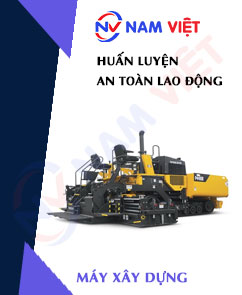

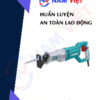



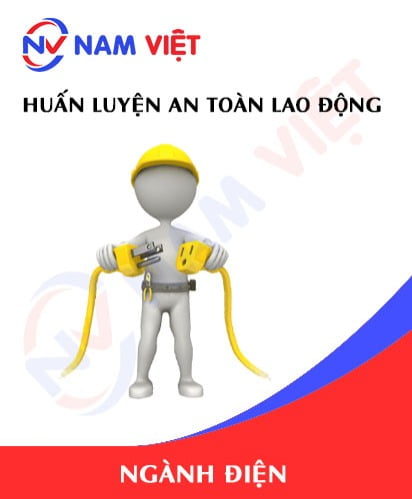
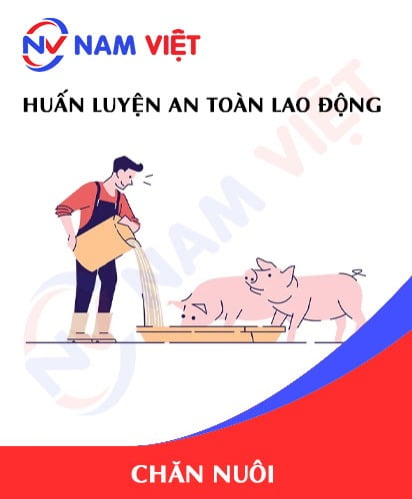





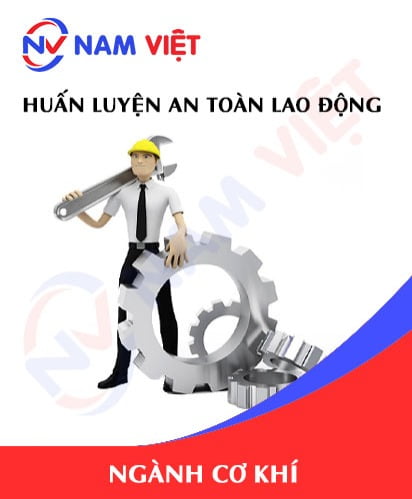
phanminhhang341
Good labor safety unit